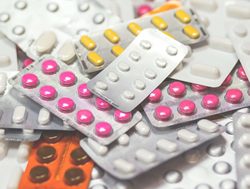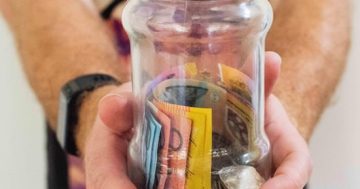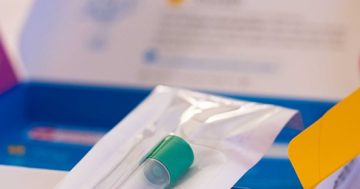Grace Browne* says a new study has found no correlation between research and development spending and outlandish drug prices
 At the end of September, a spot of good news: Relyvrio, a new drug for treating amyotrophic lateral sclerosis—or ALS, a neurological disorder without a cure—was approved in the United States.
At the end of September, a spot of good news: Relyvrio, a new drug for treating amyotrophic lateral sclerosis—or ALS, a neurological disorder without a cure—was approved in the United States.
The ALS community rejoiced; the drug’s authorization was described as a “long-sought victory for patients.”
But the next day, the price of the medicine was revealed: US$158,000 a year.
This was far higher than what the Institute for Clinical and Economic Review, an independent nonprofit that analyses health care costs, had estimated would be a reasonable price, which it deemed to be between US$9,100 and US$30,700.
Americans, though, probably weren’t shocked.
Prescription drugs in the US cost about 2.5 times what they do in other countries, and a quarter of Americans find it difficult to afford them.
Almost every new cancer drug starts at over US$100,000 a year.
And a 2022 study found that every year, the average price of newly released drugs is 20 per cent higher.
How drug prices are set in the US is a mysterious black box.
When rationalizing their lofty price tags, one of the most common reasons pharmaceutical companies will cite is that a high price is needed to make good on the money invested in research and development.
But is that true?
“You hear it so much,” says Olivier Wouters, an assistant professor of health policy at the London School of Economics and Political Science.
“That’s why I was like, well, let’s get some data, because I don’t believe it.
“I don’t think anyone believes it.”
So Wouters did just that.
In September 2022, he and his colleagues published a new paper in JAMA that took this simple argument and put it to the test.
In the study, they looked at the 60 drugs that had been approved by the US Food and Drug Administration (FDA) between 2009 and 2018 for which there was publicly available information about both R&D spending and pricing.
And then they matched up the figures.
“Essentially, it was like investigative journalism—check all the receipts, trace back in time on what they spend,” he says.
If it were the case that R&D spending was the reason behind high drug prices, you’d expect to see a high correlation between the two.
Instead, they found no correlation.
Wouters acknowledges that the sample size in the research is small, but this is because pharmaceutical companies keep most of their financial data under lock and key.
If the industry wants to refute the conclusion reached in his paper, then pharmaceutical companies need to make more data available, he says.
To anybody in the field, the response to the paper’s finding is: Well, duh.
We know what drives drug pricing, says Ezekiel Emanuel, chair of the Department of Medical Ethics and Health Policy at the University of Pennsylvania.
“It’s, ‘How far can I go? What will the market bear?’”
Still, Emanuel says, it’s important to have empirical data like this study to refute the industry’s claim.
Intuitively, it feels plausible that a drug’s price would be linked to its R&D costs—the risky biz of innovation is super expensive, right?
It turns out even this is highly contested.
In 2020, Wouters published another paper in JAMA that dug into how much it actually costs to bring a new medicine to market, something experts have been trying to work out for decades.
The number thrown around the most comes from one paper, which relied on confidential data provided by pharmaceutical companies, estimating that it takes around US$2.8 billion.
“These estimates are sort of shrouded in secrecy.
“There’s a lot of controversy around them,” says Wouters.
He and his colleagues instead found the number shook out at closer to US$1.3 billion, less than half the commonly held estimate.
Substantially lower R&D costs would suggest that this spending shouldn’t have such a big bearing on drug pricing.
Every so often, there are small glimpses behind the curtains into how pharmaceutical companies actually decide on a drug price.
An example of this is the hepatitis C drug Sovaldi, which was put on the market in 2013 for a steep US$84,000 per 12-week course.
In 2015, an 18-month-long US government investigation that reviewed some 20,000 pages of internal company documents revealed that Gilead, the company who owned the drug, had set the high price as a way “to ensure its drugs had the greatest share of the market, for the highest price, for the longest period of time”—in essence, that it was prioritizing profit.
In response Gilead said it “stand[s] behind the pricing of our therapies because of the benefit they bring to patients and the significant value they represent to payers, providers, and our entire healthcare system by reducing the long-term costs associated with managing chronic [hepatitis C virus].”
In other countries, the price paid for a drug is decided by bodies that look at the value the drug provides.
In the United Kingdom, for example, the National Institute for Health and Care Excellence (NICE) lands on the value of a new medicine by working out how much it costs to give a patient an extra year of “quality life” in comparison to current treatments on offer.
If the drug offers too little value, NICE won’t recommend it to the National Health Service.
Countries like France and Germany negotiate with pharmaceutical companies to land on a price determined by the clinical benefits a drug provides compared to others on the market.
In the US, things may be beginning to slowly move in this direction.
Under the new Inflation Reduction Act, Medicare will be allowed to negotiate prices for a small selection of drugs.
However, Emanuel is sceptical it will actually have a big impact on drug price regulation, given the way that law was designed—too many loopholes, he says.
As for holding pharmaceutical companies to account, it shouldn’t fall to academics to do this, says Tahir Amin, founder and executive director of the Initiative for Medicines, Access & Knowledge (I-MAK), a nonprofit that addresses inequities in how medicines are developed and distributed.
“We need the government authorities and bodies to be doing this work,” he says of the analysis by Wouters’ team.
“How are they setting policy when they do not have this information?”
Wouters doesn’t see his paper as a game changer, but it’s another weapon in the arsenal of those with power to refute excuses made by pharmaceutical companies.
“I never thought this was a gotcha,” he says.
“No, we always expected this to be the case.
“But I’m a firm believer that we need some evidence to point to.”
*Grace Browne is a staff writer at WIRED, where she covers health.
This article first appeared at wired.co.uk.









